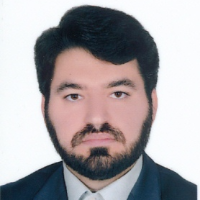Analysis and Evaluation of Teleworking of Government Staff and Its Effect on Traffic Parameters in Metropolises Using AIMSUN Simulation Model (Case Study: Tehran Metropolis)
Population growth and the increase in the number of cars have raised traffic congestion as an important issue in big cities. Reducing the number of cars on the streets, especially during peak traffic hours, has become one of the main goals of transportation demand management. With the right policy on supply and demand management, more efficient travel patterns can be created. One of the proposed ways is remote work. It means being able to connect with your business virtually with the help of technology, and its main goal is to move work towards employees instead of employees moving towards work. The purpose of this study is to identify the effects of employees' remote work on transportation, traffic, and air pollution and to analyze and evaluate their effects on traffic indicators such as density, flow, speed, travel time, fuel consumption, and pollutants. Therefore, the third district of Tehran was chosen as one of the administrative and high-traffic areas, and with access to the travel demand matrix of its peak hour, microscopic modeling was done completely in the Aimsun software. Then, to apply teleworking, scenarios based on vehicle traffic zoning have been designed and simulated, and the results have been compared. The findings showed that by applying the telecommuting policy in a peak hour in Tehran's third district, traffic indicators such as density up to 17.7%, flow up to 4.6%, speed up to 9.6%, and travel time up to 13.6% improved compared to the existing situation. In addition, fuel consumption will be reduced by 9.8%, and pollutant emissions will be reduced by 17%. Also, the results indicate that it is not necessary to apply the telecommuting policy to all areas of a city, but it is possible to achieve the desired result by applying this policy in specific areas of a city.
-
Ranking of Road Transport Smart Projects according to Implementation Time, Cost and Ease of Implementation
Mohammadreza Ahadi, , Rasoul Zabihian *
Road journal, -
Analyzing the Vulnerability of the Intersections in Large Networks during a Crisis Occurrence (Case study: Tehran)
Zeinab Ebadi, Shahriar Afandizadeh *,
Journal of Transportation Engineering, Spring 2025


